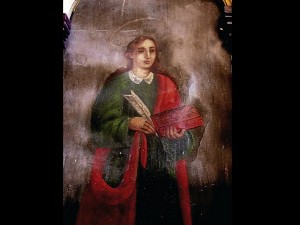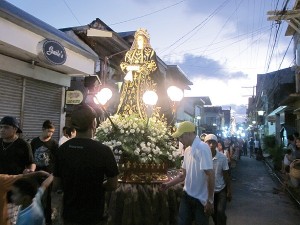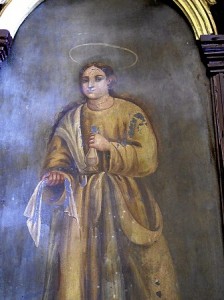
In explaining what his great novel, “Noli Me Tangere,” was about, José Rizal famously notes that it “is a satire and not an apologia… there is in it pessimism and blackness because I see much infamy in my country…”
Taking this as a cue, thousands of teachers have been instructing millions of pupils on how the “Noli” vividly illustrates the pains and problems of our nation. For generations, we read Rizal’s portrayals of Filipinos who were hypocrites, liars, robbers, traitors, murderers. We read about how our ancestors supported a regime of evil they were too co-opted or corrupted to transform. We also saw that those who challenged the status quo died miserable deaths.
During the recent Independence Day ceremonies, I listened to a former government official I admired speak of our “damaged culture.” When I hear this phrase, I generally tend to retort that it is not so much that we have a damaged culture but that our ruling elite so easily accepts such a verdict.
Then again, there may be reason for this self-denigration. After all, did we not launch what may be Asia’s first national revolution only to have its leaders killed by fellow Filipinos? Did we not proclaim what was supposed to be Asia’s first republic and then have our freedom stolen from us?
Combining this sad saga with the terrible images in the “Noli” results in such a distressing quagmire that, unsurprisingly, the fondest desire of our youth is to become citizens of another country.
Multiple readings

As a work of literature, “Noli” lends itself to multiple readings. It is certainly valid to say that Rizal exposed the vile underside of Philippine society. Yet there can surely be other ways to interpret this wonderful novel.
Last year, in celebration of the birth sesquicentennial of the Sage from Calamba, Vibal Foundation brought out a critical edition of the “Noli” with parallel texts. On one side is the original Spanish of the Berlin UR-publication, while on the facing page is the English translation by Charles Derbyshire. In the Vibal edition’s epilogue which I had the honor to write, I suggest still another approach to unpacking the meanings of Rizal’s masterpiece.
With all that has been written on the “Noli,” there is practically no discussion about the connection of the novel’s title to its biblical context. It is a well-known fact, of course, that the phrase “noli me tangere” is the Latin rendition of the words with which Christ admonished Mary Magdalene on Easter morning as recounted in the Gospel of John.
Most scholars have always assumed that the novel’s content was unrelated to John’s original story. Leon Ma. Guerrero, for example, chose to call his translation “The Lost Eden” because, as he explained, he felt that Rizal’s original title was inappropriate.
Nonetheless, the Laguna Bard’s choice of an evangelical Latin phrase indicates a literary clue that demands further investigation. As it turns out, “noli me tangere” is a much-discussed utterance in Western civilization. It has been the subject of theological debates for centuries. We now know that the correct translation should really be “do not cling to me.”
Enigmatic prohibition

The poignant Easter encounter inspired many great works of art. Painters have been fascinated by the enigmatic prohibition against embracing a beloved who had died and then come back to life.
Harry Sichrovsky, in his biography of Rizal’s friend, Blumentritt, has even suggested that the “Noli” was inspired by Correggio’s canvas in the Prado of the Easter scene.
Restoring the links between the novel and the Gospel yields fresh perspectives on the symbolism embedded in our hero’s masterpiece. For example, we will see that in John’s Easter narrative, Christ is initially mistaken for a gardener. Since Rizal also describes his main protagonist, Ibarra, as a gardener, then, clearly, a parallelism may be drawn between Ibarra and Christ.
If Ibarra is a metaphor for Christ, then, possibly, the inspiration for Maria Clara is none other than Mary Magdalene herself. After all, it was the Magdalene who first saw Jesus during that fateful morning.
This comparison may initially seem unacceptable. Maria Clara is thought to represent an image of chaste Filipina womanhood, while the Magdalene is presented as a reformed prostitute, a construct which contemporary scholarship questions. Yet, there are actually many similarities between the two women: both are rich and beautiful with long flowing hair. More importantly, both are associated with lepers. Both are said to have possessed a relic of Christ.
Interestingly, Rizal uses the same adjectives when he first portrays Maria Clara and when he describes a statue of Mary Magdalene being carried in procession.
Enriched reading
Associating the two women with each other enriches our reading. In Maria Clara we have a character whose nobility—as seen in the way she protects her mother’s reputation at the price of her own happiness—redeems a nation of Doña Victorinas.

The comparison with Mary Magdalene reveals how this nobility is something that must be earned. For just as a prostituted woman may transcend her past and follow the path of Christ, so too can a bastard rise above the accident of her sordid birth. Moreover, like the Magdalene, Maria Clara may be understood not as a lifeless saint but as a living woman who is even more inspiring because she is not ethereal but, like all of us, subject to the trials of the flesh.
We are ready to see with new eyes a passage which is often overlooked: how Maria Clara grabs Ibarra’s head and kisses him repeatedly on the lips!
The Gospel narrative of John helps us to finally bring our national hero’s novel home. We will never know for sure if the Sage of Calamba really meant to draw a parallel between Maria Clara and the Magdalene as he never discussed it. Contemporary literary approaches, however, now permit us to go beyond an author’s intentions to consider the audience’s responses.
Is it so improbable that Rizal may have selected Mary Magdalene as an anchor symbol for his novel because she was a figure to whom his compatriots could easily relate?
Popular patroness
The Magdalene’s statue is lovingly carried in countless processions during Holy Week. She is present in the Stations of the Cross of every Catholic church. In the region of Laguna de Bay, where Rizal grew up and where he set the “Noli,” there are two towns with the great saint as patroness. The lakeside shrine of Binangonan even has a retablo where two images of Mary Magdalene as well as two images of
St. John are juxtaposed with a disrobed Christ as he would have appeared emerging from the tomb.
Were all of these part of a contemplation of the Easter narrative?
That Rizal could have used the images of a gospel story to criticize Philippine society in general and the Catholic Church in particular is an indication of his amazing talent for irony. The choice of the Magdalene as metaphor is one more manifestation of Rizal’s genius: He understood how Filipinos have long been able to draw meanings from the world around them, a world overlaid with legends and myths which help explain cultural truths.
Revitalized vision
In the “Noli,” Rizal describes the Virgin of Antipolo visiting the sick in the guise of a beggar. In the “Fili,” we read how earthquakes are reminders that the King of the Tagalogs is stirring beneath the mountains of Montalban, ready to burst from his chains and free his people.
Both these examples show the Filipinos’ sense that beyond the physical realm, there is another dimension which animates our lives, that is the wellspring of an inner power. This perception of the unity of the material and the spiritual is the source of much that is inspiring and even amusing in our hero’s novels.
As the commemoration of José Rizal’s 150th birth anniversary draws to a close, it is time that we reread our great Sage’s works with revitalized vision. In such a new appreciation, I hope that we finally celebrate the “Noli” and the “Fili” not just because they unmasked what was so wrong about our country. I pray that we also take the trouble to seek what these remarkable works say was so right about us.
The author is director of the National Archives. Send comments to [email protected]














































